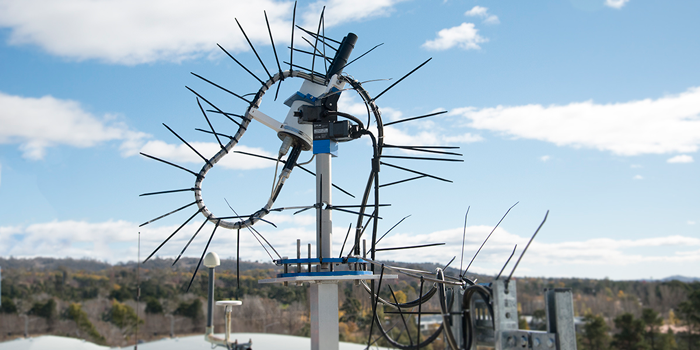News
Pandora spectrometers fill vital gap in global satellite validation network
Published:14 June 2018
Pandora spectrometers fill vital gap in global satellite validation network
Geoscience Australia has successfully installed and deployed two Pandora spectrometers on behalf of the European Space Agency. The instruments fill a key gap in southern hemisphere data via a global ground-based instrument network for monitoring air quality and satellite validation.
The Pandora spectrometers measure atmospheric gases including nitrogen dioxide, sulphur dioxide, ozone and formaldehyde. Located in Alice Springs and Canberra, data from the Pandora spectrometers will support the validation of atmospheric constituents measured by a range of European Copernicus Program satellites, including Sentinel 5P and Sentinels-4/5 satellites.
Satellite-based measurements of atmospheric gases and other pollutants are used in combination with on-ground measurements to monitor air quality to help governments develop strategies to improve air quality.
Data are now being generated by the two spectrometers, and can be accessed through the data servers operated by the Pandonia network. This is the first time Geoscience Australia has operated ground based spectrometers in support of ongoing validation of satellite measurements.
Geoscience Australia's Director, Calibration and Validation, Medhavy Thankappan explained that the European Space Agency approached our agency directly in 2017 to support this project in recognition of the Australian Earth Observation community's highly regarded track record of ground-based calibration and validation activities.
"This project offers us an opportunity to generate better quality data for the benefit of the global Earth Observation community, by providing essential ground-based validation support for a number of optical sensors across the Copernicus Program," Mr Thankappan explained.
"Australia, with its generally clear atmosphere, and sparse population, has the potential to provide a baseline for monitoring our region's air quality into the future," he added.
 A Pandora spectrometer has been installed on the roof of Geoscience Australia in Canberra and is producing data
A Pandora spectrometer has been installed on the roof of Geoscience Australia in Canberra and is producing data
The instruments will also help with aerosol characterisation across all optical sensors, an essential input supporting data calibration and validation for the Digital Earth Australia program.
The operation of the two spectrometers by Geoscience Australia is part of the ongoing collaboration with ESA on satellite calibration and validation activities, and is also covered by the Copernicus Cooperation Arrangement between the Australian Government and the European Commission.
Contact:
Phone:
Email:




